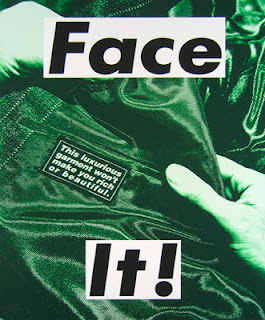1. Identify aspects of Durer's self portrait that show a changing view of the artist's view of himself as an individual.
Painted in the early renaissance, Durer's secular portrait of himself shows us the way in which artists after the 14th century had a drastic change in the way they viewed them self. In the portrait we see a full-faced depiction of the artist Albercht Durer. One of the first techniques we notice is Durer's use of symmetry. His Hair, face and body are all symmetrically aligned in a way that only the gods and higher-ups were immortalized in back in ancient Greek and Roman times. Another thing to point out is that the coat he is wearing is made of presumably real fur. This during the renaissance time was a common sign of wealth.
2. Explain how the artist's social status increased during the Renaissance period. Briefly explain why this happened.
The renaissance period was the beginning of a new era, literally meaning "rebirth", It sparked high interest in old Greek and Roman antiquity from the 14th all the way to the 17th century. Artists still produced a lot of Christian paintings during this time, however they were also able to focus on new and exciting ideas brought upon by old antiquity thought to be forgotten. The wealthy took advantage of these new found ideas and frequently hired artists to portray them via painting or sculpture in ways that related back to ancient Greek and Roman history. They became "patrons" of the arts. This movement allowed for artists to become widely sought after by kings, emperors, and many other wealthy patrons other than just by the church.
3. Comment on Gavin Turk's work in relation to individualism, status of the artist and egotism.
Individualism is an ideological concern that was brought about during the renaissance period. It is the idea of the moral worth of the individual and the control over our personal beliefs. Gavin Turk is a man who belives in the importance of ones self. This is why, in a way, he is similar to Durer as he has created a modern version of something that shows how egotistic he really is.
4. Comment on Damien Hirst's use of his work and the media for self promotion.
Damien Hirst's "Damien Hirst and Mia Norman" is an interesting piece of work, not only because of the content but because of the story behind how he became to be so self promoted. As with Hirst it was also true that many other young british artists after him were mostly seen to be very intependant. They were often seen for there entrupenurial aspects and knowledge of media. Hirst would often promote his own exhibitions and they would be relitively successful. I think this is what he is trying to show by having more of him in the image, and less of her(her body being camoflagued with the backdrop).
5. Find 2 images of work by artists or designers that reflects some of the ideas of individualism,
self promotion or egotism that have been discussed on this blog. Upload images to your blog, title and date the work, identify the artist/designer and comment on the work in relation to the question.
Scream by Edward Munch 1893
Munch's "Scream" is a very famous painting that has gained recognition in almost all corners of the world. The main reason for this is that everyone can react to it in different ways. It poses questions like"who are the figures in the painting?" and "What is the abstracted figure actually screaming about?". I personally think it has a lot to do with Munch's identify considering his past and that during the time of the painting his sister was in a mental asylum.
Arnolfini Portrait by Van Eyck 1434
This is a painting of the Arnolfini wedding that was crafted in the early renaissance by a Belgium artist named Van Eyck. One reason this painting sparked great interest in its time period was that it was one of the first panels painted with oil. The other reason is that it is filled with everything that resembled a wealthy couple in the renaissance time period. It seems as thought the fur garments, expensive chandelier, and everything else that resembles wealth has had more attention added to them rather than the fact that they are getting married. They want you to know there rich. This shows the individualism of the Arnolfini's but Van Eyck has also shown his own egotism by putting his signature above the mirror on the back wall.
6. How do you think artists and designers are viewed in Western society today?
Artists in today's society have a lot more to consider than those of the renaissance period. They have a lot more aspects they can be judged on where as in older times a lot of things were done by way of the church. Having said that artists are also more sought after as industrialism continues to grow. They have a handful of medias at their disposal and i think they will continue to be sought after for a very long time.
7. Reference the websites and/or books you have used, at the end of your blog.
http://www.all-art.org/baroque/portrait12.html
http://academic.brooklyn.cuny.edu/english/melani/cs6/ren.html
http://www.britannica.com/EBchecked/topic/286303/individualism
http://www.skny.com/artists/gavin-turk/
http://www.artbible.info/art/biography/jan-van-eyck









